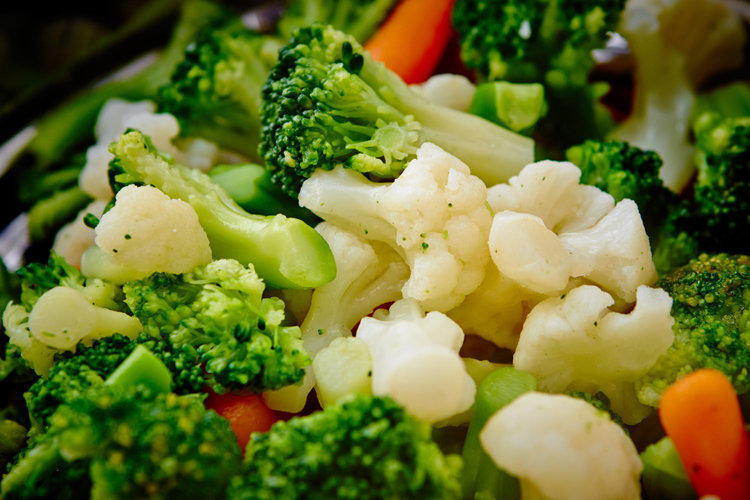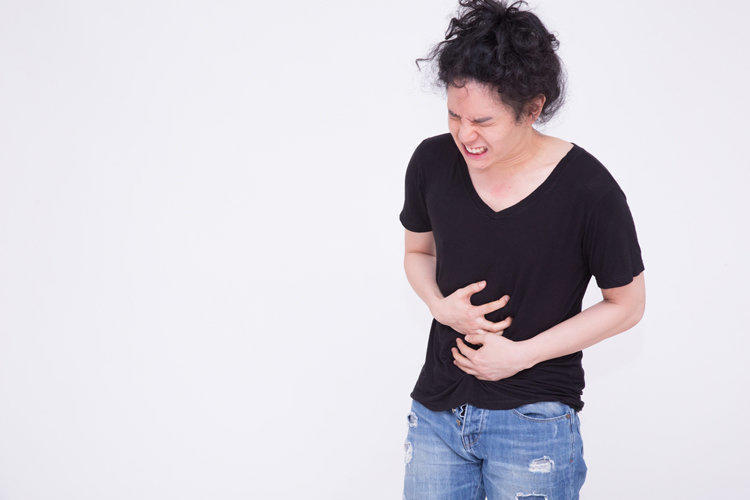- What is Crohn’s disease?
- Causes of Crohn’s Disease Development
- Hereditary predisposition
- Theory of antigen production
- Infectious Theory
- Autoimmune Theory of Crohn’s Disease
- Crohn’s Disease Symptoms
- Diagnosis of Crohn’s Disease
- Crohn’s disease treatment
- Drug therapy for Crohn’s disease
- Diet for Crohn’s disease
Crohn’s disease is a chronic (longer than 6 months) disease of the gastrointestinal tract that can affect any part of the digestive system, most often the final section of the small and / or large intestine.
Crohn’s disease is an inflammatory disease of the entire gastrointestinal tract or a particular part of it. The internal mucous membrane, the submucosa is involved in the inflammatory process, and the muscle layer can be affected. In the dynamics of Crohn’s disease, there are periods of exacerbations and incomplete remissions. Crohn’s disease affects about 50-60 people out of a 100,000 population, which classifies this autoimmune disease as a rare orphan pathology.
What is Crohn’s disease?
The disease is named for the American doctor-gastroenterologist Burrill B. Crohn (1884-1983), who first compiled a complete clinical description of the disease and published it in 1932. Dr. B. Crohn proposed such variants of the name of the disease as cicatrizing enterocolitis, regional enteritis, regional ileitis, but the pathology was included in the medical classification under the name of the discoverer.
All parts of the digestive tract can be involved in the pathological process, but statistically, there is only a lesion of the ileum, the final part of the small intestine, when it passes into the cecum. Inflammation can spread to other organs of the digestive system.
The inflammatory process, affecting the three layers of the intestine, can provoke the development of numerous complications, much of which can be cured only by surgical methods of therapy.
The disease belongs to rarely occurring pathologies. The average age of manifestation of the first symptoms is from 20 to 40 years (according to other sources, from 14 to 35 years), rarely the manifestation of the disease is observed in children. The chronic course of Crohn’s disease, which cannot be completely cured, consists of periods of exacerbations and incomplete remissions.
Due to the similar clinical picture, ulcerative colitis and Crohn’s disease are included in the IBD group (inflammatory bowel disease). Diagnosis is difficult due to the partial coincidence of symptoms with manifestations of other diseases, in particular, dysentery, chronic enteritis, non-ulcerative colitis, systemic lupus erythematosus, salmonellosis.
Causes of Crohn’s Disease Development
The exact causes of the disease have not been established. Scientists suggest the role of provoking factors affecting the occurrence and development of pathology.
In the etiology of Crohn’s disease, theories of familial, hereditary predispositions, the theory of antigen formation, infectious and autoimmune nature of the disease are distinguished.
Hereditary predisposition
The theory of the genetic factor in the cause of Crohn’s disease is confirmed by statistical data: the pathology from a parent is transmitted to a child in 70% of cases, and 80% of the clinical manifestations of the disease in this pair are identical.
The CARD15 (NOD2) gene, isolated in 2001, has been identified as a factor correlating with intestinal inflammatory processes and indirectly confirms the theory of hereditary predisposition.
It should be noted that it is not always in the case of acute forms of Crohn’s disease that causes have a genetic etiology. The presence of genetic predisposition affects the severity of the disease and the speed of its development.
Theory of antigen production
Antigens are foreign (at the molecular level) substances for the body, which are formed under the influence of external or internal factors and accumulate in the intestine.
In response to the presence of antigens in the body, the process of immunization starts, the production of antibodies begins.
Defects of the intestinal mucosa (for example, erosive changes) contribute to increased absorption of antigens, which can provoke local inflammation that spreads with the development of the process to other areas of the digestive tract.
Infectious Theory
Infectious theory is based on the occurrence of a pathological condition that develops as a result of an attack of the body by pathogenic microorganisms.
The extent and dynamics of the infection process depend on the etiology of the infection and the conditions for the growth of microorganisms.
Infectious theory claims that, under equal conditions, the disease affects organisms selectively. Individual body resistance and a number of factors affecting it, such as: genetic predisposition, immune system condition, past or chronic diseases, living conditions, stress, lifestyle, diet, affect the degree of susceptibility to viruses, fungi, bacteria, protozoa.
At the moment, there are two pathogenic organisms in the pathogenesis of Crohn’s disease: mycobacterium paratuberculosis and the measles virus. Proof of infectious theory is the successful symptomatic treatment of patients with specific antibacterial drugs active against these pathogens.
Autoimmune Theory of Crohn’s Disease
In autoimmune diseases, antibodies that normally respond to a foreign protein begin to recognize their own tissues as antigens. If such an auto-aggression of the immune system occurs, the development of Crohn’s disease is likely.
Crohn’s Disease Symptoms

The disease is divided into acute, subacute and chronic forms according to the nature of the development of the symptom complex.
The acute form of Crohn’s disease begins abruptly, with an increase in body temperature, pronounced pain in the right lower peritoneum, diarrhea, which sometimes leads to erroneous diagnoses, for example, acute appendicitis, ovarian apoplexy, etc.
Subacute form of the disease is accompanied by periodic diarrhea, cramping pain in the abdomen with different localization, signs of exhaustion.
The chronic form of the disease is characterized by a slow increase in symptoms:
-
- cramping pain in different segments of the abdomen, increasing after eating and subsiding after a bowel movement;
- signs of bloating, excessive gas formation;
- frequent diarrhea, up to 3 times a day, with periods of normalization of intestinal functions;
- blood inclusions in feces;
- hyperthermia of the body (up to 38C);
- weight loss due to eating disorders;
- appetite disturbances;
- general signs of indisposition, exhaustion: increased fatigue, weakness, irritability, dry skin, brittle nails, hair due to a violation of the absorption of vitamins and nutrients in the inflamed bowel;
- possible formation of cracks, foci of maceration of the skin around the anus.
The signs of long-term chronic bowel disease include extraintestinal symptoms:
- pain in the sacrum due to inflammation of the joint;
- decreased visual acuity, pain in the eyes;
- decreased mobility and pain in large joints;
- erythema nodosum, skin rash: pustules, tight painful nodes that change color from red and purple to brown and yellow;
- ulceration of the oral mucosa;
- pain in the right hypochondrium, yellow skin and eye sclera with liver and biliary tract damage.
Diagnosis of Crohn’s Disease

Crohn’s disease is not diagnosed on the basis of examination or laboratory tests of biological body fluids due to the absence of specific markers and signs. Blood tests suggest an inflammatory bowel disease.
For accurate diagnosis using the methods of instrumental studies:
- colonoscopy reveals the presence of ulcers, with probe colonoscopy, a complex examination is possible: visual examination and biopsy;
- gastroduodenoscopy allows you to visually assess the status of the duodenal mucosa, stomach and esophagus;
- X-ray contrast examination of the intestine reveals erosion and cracks in the intestinal mucosa, narrowing of the intestinal lumen;
- computed tomography method is used in case of suspected development of complications (abscesses, infiltrates);
- Ultrasound examination of the intestine is used to detect free fluid in the abdominal cavity (peritonitis), complications of Crohn’s disease;
- magnetic resonance imaging with contrast helps to assess the volume of intestinal lesions, diagnose complications such as the formation of fistulous passages, an increase in lymph nodes, etc.
- Electrogastroenterography allows you to assess the state of the motor function of the intestine.
Crohn’s disease treatment
In cases of Crohn’s disease, treatment steps include medication methods for treating the inflammatory process, diet, prevention and treatment of complications.
Drug therapy for Crohn’s disease
The following groups of drugs are used to treat Crohn’s disease:
- aminosalicylic acid derivatives (sulfasalazine, mesalazine);
- antibiotics (ciprofloxacin, metronidazole);
- immunosuppressants, glucocorticoid drugs (Prednisolone, Methylprednisolone);
- cytostatic agents to suppress the autoimmune reaction (azathioprine, methotrexate);
- Anti-necrosis factor (Golimumab, Infliximab, Adalimumab);
- probiotic preparations for maintaining or forming normal intestinal microflora (Bifidumbakterin, Bifiform, Linex, etc.);
- vitamin D and general complex preparations with higher doses of vitamins and minerals;
- Antidiarrheal drugs (Loperamide, Imodium) are prescribed only in the absence of blood inclusions in the feces and a negative result of bacteriological examination.
Diet for Crohn’s disease

The basic principle of dietary nutrition for a given disease is the choice of dishes that do not irritate the digestive system with the composition, texture or temperature of food and beverages.
Vegetable soups, weak broths, mucous porridges, low-fat fermented milk products in small volumes, boiled, baked, steamed vegetables, meat, fish, poultry low-fat varieties are recommended. Of the drinks preferred non-acidic fruit drinks, fruit drinks, diluted juices, tea, jelly.
It is not recommended to include fatty, fried foods, canned food, prepared foods, pickles and pickles, mushrooms in any form, fresh vegetables or fruits, legumes, barley and wheat cereals, confectionery, chocolate in the diet. Of the drinks limit strong tea, coffee, sour juices, carbonated drinks, alcohol.






